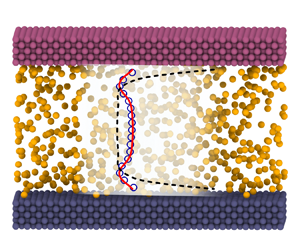Published online by Cambridge University Press: 24 November 2023

A thermodynamically consistent kinetic model is proposed for the non-equilibrium transport of confined van der Waals fluids, where the long-range molecular attraction is considered by a mean-field term in the transport equation, and the transport coefficients are tuned to match the experimental data. The equation of state of the van der Waals fluids can be obtained from an appropriate choice of the pair correlation function. By contrast, the modified Enskog theory predicts non-physical negative transport coefficients near the critical temperature and may not be able to recover the Boltzmann equation in the dilute limit. In addition, the shear viscosity and thermal conductivity are predicted more accurately by taking gas molecular attraction into account, while the softened Enskog formula for hard-sphere molecules performs better in predicting the bulk viscosity. The present kinetic model agrees with the Boltzmann model in the dilute limit and with the Navier–Stokes equations in the continuum limit, indicating its capability in modelling dilute-to-dense and continuum-to-non-equilibrium flows. The new model is examined thoroughly and validated by comparing it with the molecular dynamics simulation results. In contrast to the previous studies, our simulation results reveal the importance of molecular attraction even for high temperatures, which holds the molecules to the bulk while the hard-sphere model significantly overestimates the density near the wall. Because the long-range molecular attraction is considered appropriately in the present model, the velocity slip and temperature jump at the surface for the more realistic van der Waals fluids can be predicted accurately.